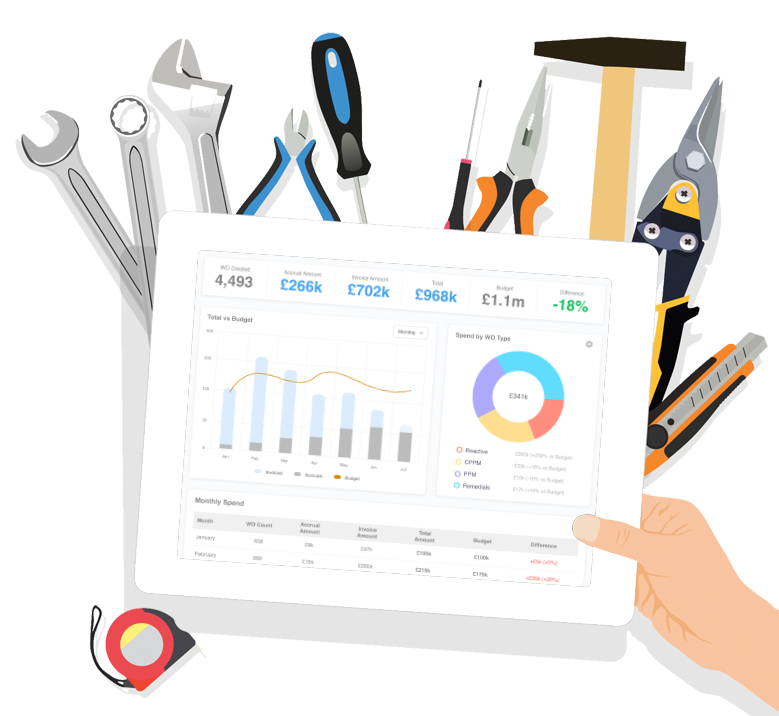🗓️ Tues 24th Nov 2020 - 11:30 AM (GMT)
Our highly experienced FM panel from businesses like Tesco, Swiss Re and UKTV discuss what is next for facilities management software, their experiences and how it delivers value.
📺Watch NowHere’s how you choose the right CAFM
🗓️ Tues 24th Nov 2020 - 11:30 AM (GMT)
Our highly experienced FM panel from businesses like Tesco, Swiss Re and UKTV discuss what is next for facilities management software, their experiences and how it delivers value.
📺Watch Now
Technology has always played a role when it comes to managing buildings. However, despite being around since the 1960s, the use of FM technology (CAFM) is still being resisted by organisations today. A common perception made by FM teams is that facilities software is still difficult to use and costly to deploy and maintain.
Despite the amazing advances in technology, why is the FM industry being left behind? Why are over 50% of facility operations not using any form of dedicated FM software?
Key areas of discussion include:
Preventive and predictive maintenance can boost first-time fix rates (FTFR) by reducing the need for reactive repairs and emergency fixes.
Read More »The manual quoting process is draining your sales team's energy and your bottom line. Every hour spent on spreadsheets is an hour not spent closing deals. Every pricing error is a potential client ...
Read More »Facilities Managers are often under pressure to reduce FM costs in their organisations. This can be achieved by focusing on a few key areas, such as implementing predictive maintenance, using smart ...
Read More »What's new at Expansive this month? This month, we've focussed on the ability to group contractors using tags as well as our new AI invoice submission tool.
Read More »What Is Facility Management? Facility Management, or FM, is the responsibility of keeping buildings and workplaces running smoothly. Whether it's an office, hospital, school, or manufacturing plant, ...
Read More »Whether you're running a single office or multiple sites across the country, the complexity of facility management demands smart solutions.
Read More »